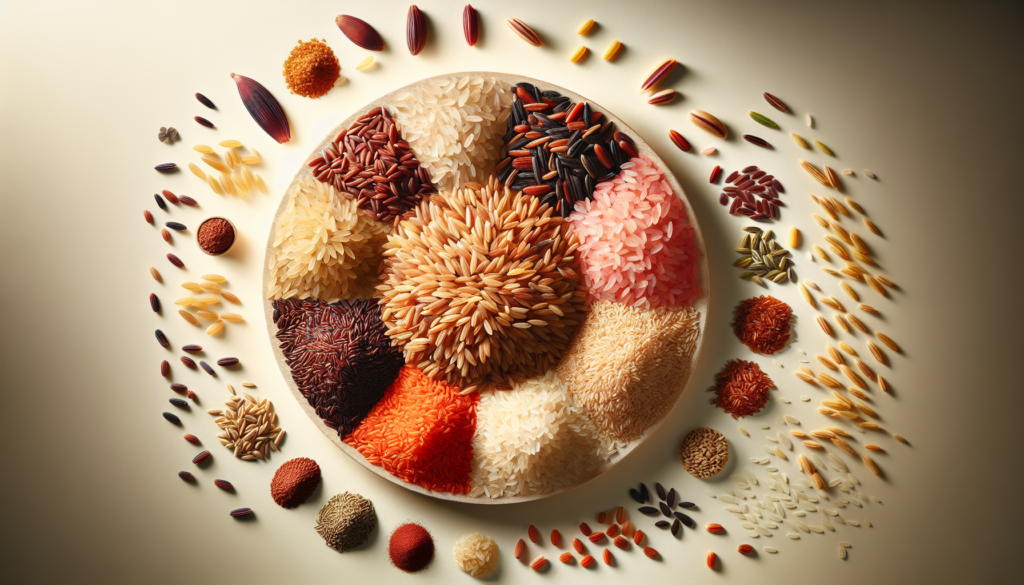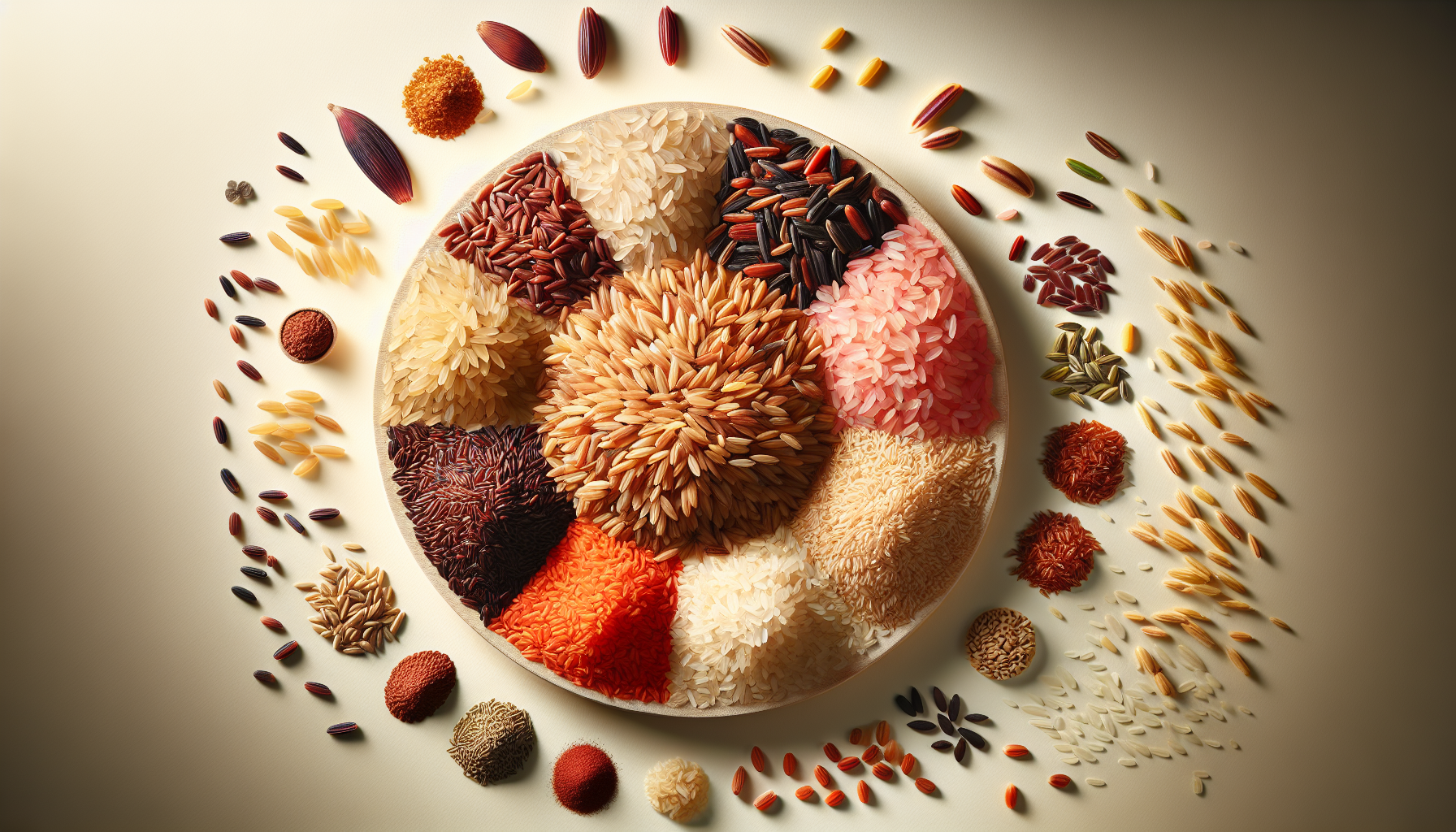Are you a rice lover but find yourself constantly questioning which type of rice is the healthiest? Look no further because we’ve got you covered! In this article, we will explore different types of rice and dive into the nutritional benefits they offer. From brown rice to wild rice and everything in between, discover the power-packed options that will leave you feeling guilt-free while enjoying your favorite grain. So, let’s explore the wide world of rice and choose the healthiest option that suits your taste buds!
Health Factors in Rice
When it comes to choosing the healthiest rice for your diet, there are various factors to consider. Rice is a staple food for many cultures around the world, and it offers a variety of nutritional benefits. In this article, we will explore the nutritional value, glycemic index, fiber content, antioxidant levels, and mineral content of different rice varieties. By understanding these factors, you can make an informed decision about which type of rice is best suited for your dietary needs.
Nutritional Value
The nutritional value of rice varies depending on the variety and processing method. Rice is primarily composed of carbohydrates, with a small amount of protein and almost no fat. It is also a good source of essential vitamins and minerals, such as niacin, thiamin, iron, and magnesium. Different rice varieties may have varying levels of these nutrients, so it’s important to consider your specific dietary requirements when choosing a type of rice.

Glycemic Index
The glycemic index (GI) is a measurement of how quickly a food raises blood sugar levels. Foods with a high GI can cause a rapid increase in blood sugar, while those with a low GI are digested more gradually, resulting in a slower and more sustained release of energy. Generally, brown rice has a lower GI compared to white rice, making it a better choice for individuals looking to manage their blood sugar levels.
Fiber Content
Fiber is an essential nutrient that aids in digestion and helps regulate blood sugar levels. Brown rice typically contains more fiber than white rice as it retains the bran and germ layers during processing. The fiber content in rice promotes a feeling of fullness, which can aid in weight management and reduce the risk of overeating.
Antioxidant Levels
Antioxidants play a vital role in protecting the body against free radicals, which are harmful molecules that can damage cells and contribute to chronic diseases. Some types of rice, such as black rice and red rice, are known to have higher antioxidant levels compared to white rice. Including these varieties in your diet can help boost your antioxidant intake and support overall health.
Mineral Content
Rice contains various minerals that are necessary for maintaining optimal health. These include magnesium, iron, zinc, and potassium. The mineral content in rice can vary depending on the variety. For example, wild rice is particularly rich in minerals, making it a nutritious option to consider. Incorporating a diverse range of rice varieties into your diet can ensure a balanced intake of essential minerals.
Different Rice Varieties
There are numerous rice varieties available, each with its unique characteristics and nutritional profiles. Let’s explore some of the most common types of rice and their health benefits.
Brown Rice
Brown rice is a popular choice among health-conscious individuals due to its high fiber content and nutrient density. Unlike white rice, which has undergone extensive processing to remove the bran and germ, brown rice retains these layers, resulting in a higher fiber and nutrient content. It contains essential B vitamins, manganese, and magnesium, which support brain function and promote bone health.
White Rice
White rice is the most commonly consumed rice variety, known for its fluffy texture and mild taste. However, compared to brown rice, it has a lower fiber content and reduced levels of vitamins and minerals due to the removal of the bran and germ layers during processing. To enhance its nutritional value, some white rice is enriched with nutrients such as iron and B vitamins.
Black Rice
Black rice, also known as forbidden rice, is a highly nutritious rice variety that boasts a striking dark purple color. It is rich in antioxidants, particularly anthocyanins, which give it its distinctive hue. Anthocyanins are known for their anti-inflammatory properties and potential health benefits, including improved heart health and reduced risk of chronic diseases.
Red Rice
Red rice is another nutritious rice variety. It gets its reddish-brown color from the pigments present in the bran layers. Red rice contains higher levels of antioxidants, including anthocyanins and vitamin E, compared to white rice. These antioxidants help protect the body against oxidative stress and may have anti-aging properties.
Wild Rice
Despite its name, wild rice is not a true rice but rather a type of aquatic grass seed. It has a distinct nutty flavor and chewy texture. Wild rice is high in fiber and protein, which can help promote satiety and regulate blood sugar levels. It is also a good source of minerals such as potassium, phosphorus, and zinc, which contribute to overall health and well-being.
Basmati Rice
Basmati rice is a long-grain rice with a delightful aroma and delicate flavor. It is commonly used in Indian and Middle Eastern cuisines. Basmati rice has a lower glycemic index compared to many other types of rice, making it a suitable choice for individuals following a low glycemic diet. It also offers a moderate amount of fiber and essential nutrients such as iron and B vitamins.
Jasmine Rice
Jasmine rice is another fragrant rice variety that originates from Thailand. It has a subtly sweet aroma and a soft, sticky texture when cooked. Jasmine rice is known for its relatively high glycemic index compared to other types of rice. It provides a modest amount of fiber and offers essential minerals such as manganese and selenium.
Arborio Rice
Arborio rice is a short-grain rice primarily used in traditional Italian dishes, particularly risottos. It has a high starch content that yields a creamy and silky texture when cooked. Arborio rice has a moderate glycemic index and provides small amounts of fiber and minerals such as potassium and magnesium.
Sushi Rice
Sushi rice, also known as sticky rice or short-grain japonica rice, is a staple in Japanese cuisine, particularly for making sushi. It has a slightly sweet taste and sticky texture that allows it to hold its shape when rolled. Sushi rice has a relatively high glycemic index and provides a limited amount of fiber. However, it offers some essential nutrients, including manganese and selenium.
Forbidden Rice
Forbidden rice, also known as black rice, is a type of whole grain rice that was once exclusively reserved for Chinese royalty. It has a slightly nutty flavor and a chewy texture. Forbidden rice is known for its high fiber content and impressive levels of antioxidants, particularly anthocyanins. These antioxidants have been linked to potential health benefits, including reduced inflammation and improved heart health.
In conclusion, the healthiest rice to eat depends on your specific dietary needs and preferences. Brown rice is generally considered a nutritious option due to its high fiber content and nutrient density. However, other rice varieties like black rice, red rice, and wild rice offer unique health benefits, such as higher antioxidant levels and mineral content. By incorporating a variety of rice varieties into your diet, you can enjoy the different flavors and nutritional advantages they provide. Remember to consider factors such as glycemic index, fiber content, and enrichment when selecting the best rice for your health goals.



